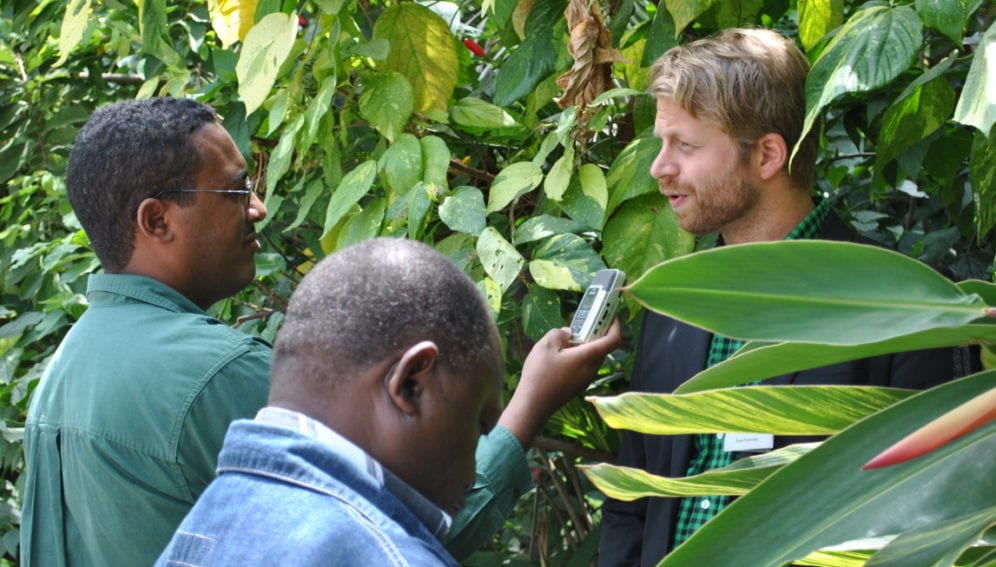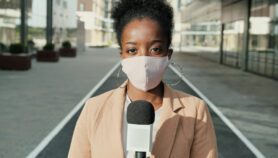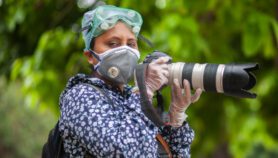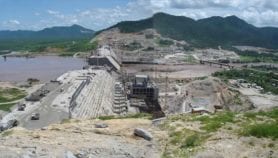By: K. S. Jayaraman
Send to a friend
The details you provide on this page will not be used to send unsolicited email, and will not be sold to a 3rd party. See privacy policy.
Investigative journalism is rewarding but requires vigilance, determination and preparation. K. S. Jayaraman shares tips from his career.
Every journalist should aim to do some investigative reporting during his or her career. Investigative stories make good copy, and can also bring awards and recognition. After all, it is a journalist's duty to uncover the truth.
But is science fertile ground for such stories? While it is true that the politics and crime beats offer great opportunities, this guide will show you that like most areas of public life, science has just as much scope for investigation. Here you will find first-hand examples of how to go about investigating science.
Keep a lookout
Most science stories are second-hand, based on findings made by scientists. Investigative pieces, in contrast, rely on the reporter's own initiative to ferret out news that other people conceal.
Spotting stories requires a critical eye, a quizzical mind and the determination to keep digging for information even in the face of stiff opposition. Sometimes the real story emerges while you are sniffing around for information on something else.
Ideas for stories can come from a variety of places. Listen to interviewees carefully: are there certain points they are defensive about? For example, I was once interviewing a WHO official who refused to give me further information about a mosquito research project in New Delhi, India, saying it was "sensitive" — a word that should ring alarm bells for any journalist. This led to a six-month investigation, a parliamentary inquiry and the government shutting down the project.
Similarly, when during a routine introductory meeting a senior official at the agriculture ministry mentioned his department had "recently destroyed a huge consignment of infected plants", I pressed him further and he revealed that the plants were hops that had been infected by nematode worms. He then refused to discuss the topic, making me suspicious (more on this later).
It's a good idea to read the news and academic literature in areas that might be fruitful for investigative stories, particularly within beats you want to cover. This makes it easier to find conflicting information.

Be on the lookout for news that others conceal
Flickr/gerlos
When a private eye hospital in Chennai, India, claimed it had carried out a record number of corneal transplants — where a diseased cornea is replaced by donated corneal tissue — I was suspicious, having read stories about shortages at eye banks. Further investigation showed that the hospital was intercepting most of the eyes donated to India for poor patients by an eye bank in Sri Lanka, selling them to their rich patients instead. When the story was published it prompted the government to route donor eyes via government hospitals and build safeguards into India's Eye Donation Act.
Journalists can play a role in rooting out scientific fraud, such as when Nature questioned the validity of stem cell research in South Korea. [1] But for most journalists, reporting on scientific fraud is more about looking into other people's accusations. [2]
Lots of investigative stories start as tip-offs from sources. It is always useful to cultivate contacts with leaders of scientists' unions or associations, or disgruntled elements in the establishment who may tell you when someone is hiding important information.
You can't follow up every tip-off, so use your judgment about what's worth pursuing. You'll develop this over time, but also use common sense. Ask yourself some basic questions: does this seem likely? Does the source have something to gain from a story? Is this the kind of thing someone would want to hide? You'll soon learn which ideas are worth looking into and which to avoid.
Dig deeper
Once you've decided a story is worth chasing, do some preliminary research. At this stage you need information to show it's a valid story when pitching it to your editor.
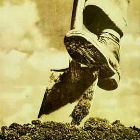


Dig deeper to uncover valid stories
Flickr/drbexl
The information you gather depends on what you're looking into. When I began to look into the WHO mosquito research project, it was before the days of the Internet, so I scoured the project's own published reports and relevant books and journals, and spoke to sources. You must be patient: investigative stories can take days, weeks or months, and sometimes come to nothing.
For the infected hops story, I rang a contact I'd cultivated over many years, a plant pathologist at the Indian Agricultural Research Institute in New Delhi. He explained that nematodes are deadly agricultural pests and difficult to eradicate from the soil, and that the consignment of hop plants had originated in Australia and was infected with a type of nematode not recorded in India. This was enough to make me think it was worth investigating further.
Ask questions
Once your editor gives you the go-ahead your research needs to change gear: make sure you have the facts straight and a watertight line of reasoning. Ask yourself a series a questions. For the hops story the questions included: who imported the hops? How did the airline clear them for transport? Why was it not tested and destroyed at the airport? What would have been the danger to Indian agriculture had the import succeeded?
Searching for the answers unearthed a racket involving a brewery, airlines, corrupt officials and inadequate quarantine regulations. After the story was published, a parliamentary committee carried out its own investigation and recommended an amendment to India's Quarantine Act. The hallmark of the best investigative stories is that they have an impact.
Don't use unethical methods to obtain information. Undercover techniques such as secretly recording people can be justified if the story is in the public interest and there is no other way to obtain the information, but check the law in your country first — it's never justified to break the law.
Information can now be accessed at the click of a mouse. Many organisations publish reports and documents on their websites, and many journals have online archives.
All this information means journalists can use data as a source too. For example this story [3] by Vibha Varshney required sifting through a pile of data to investigate why 80 per cent of Indians are deficient in vitamin D, when the 'sunshine vitamin' should be abundant in this tropical country.
The general challenges faced by science journalists in developing countries [4] are just as relevant for investigative work as straight reporting. Lack of transparency and limited access to scientists, government records and officials can be major handicaps, but this is beginning to change.
Investigative journalists in India are now routinely invoking the Right to Information Act (RTI) to get information that would have been denied by authorities in the past. The revelation that more than 2,000 clinical trial subjects had died between 2008 and 2011 came out of an RTI query [5].
Cultivate relationships
For inside information there is no substitute for interviews with sources. It's a good idea to cultivate sources by getting in touch with them every now and then, not just when you need them. This is not the same as being their friend, and you must be careful to remain professional and make it clear that the relationship is between a source and a journalist.
Often it's best just to let your sources talk. You might not know what questions you want to ask, and useful information might arise from giving someone the opportunity to speak.
You should never rely on a single source — it may be that they have hidden motives for a certain version of a story to come out. If someone is keen to talk, ask them for the contact details of other people to verify the information. And verify it with people outside your source's circle. This will help you expose their motives, or simply add another dimension to your story. And remember: you are never at their mercy; you don't have to publish what they say.
You also need to know when it's appropriate for someone to remain anonymous. Name a source unless they've specifically objected to it. You can anonymise someone if they offer essential information that can be confirmed by other reliable sources. You should protect the identity of anonymous sources, even under pressure from people who want to know their identity.
It's not just relationships with sources you need to worry about. During an investigation it's important to keep your editor in the loop. Investigations need time, and your editor needs to know you are getting somewhere. They have to justify the story to their superiors, so they need to know the details.
Remember your editor takes ultimate responsibility for the published story — you must be sure of your facts if you are putting other people's careers on the line.
Prepare for conflict
Investigative journalism can lead to conflict. The best way to protect yourself is to keep your own house in order. You know that you've uncovered facts, but you need others to believe that too.



Anticipate rebuttals and even legal action
Flickr/zigazou76
As you do your research keep good records — you're likely to have a huge amount of information, so organise it sensibly for what might happen before and after publication. This means keeping notes, transcripts or recordings from interviews, and copies of documents so they can be easily found if asked for.
You should anticipate rebuttals and perhaps even legal action. Make sure your publication's lawyers have checked the story and supporting information in advance of publication. They must feel confident that you could counter any legal action taken.
You should also give the subject of your story, whether a person or organisation, the opportunity to comment before publication. Speaking to them is desirable for your story anyway, but even if they refuse, they should be aware of the accusations being levelled against them.
Investigative journalism can be a messy business, and you may face ethical dilemmas. You may come under pressure to suppress stories, you might even be offered a bribe or threatened with violence. This is where you need to weigh up your journalistic and legal ethics with your personal safety.
There are times when it's ok to suppress or delay the release of a story. When the Indian government wanted to keep quiet about India's first expedition to Antarctica in the early 1980s, I waited until they'd arrived before releasing the story. At other times it's in the public interest to publish.
Follow up
Your story might have been published, but that's not the end of it. Even if you don't have any comeback, it's a good idea to keep track of where it goes, and keep pitching follow-up stories. In the process of a good investigation you will have become an expert on the subject, so you should aim to keep it that way.
Once you've done your first successful investigation, you'll grow in confidence. And once you've done a few, you'll find you can't get enough.
K.S. Jayaraman is a freelance science journalist based in Bangalore, India. He is former science correspondent for the Press Trust of India.
Suggested reading:
1) So You Want to be a Science Writer (Association of British Science Writers, 2002)
2) Story-Based Inquiry: A manual for investigative journalists (UNESCO, 2011)
References
[1] Korea's stem-cell stars dogged by suspicion of ethical breach (Nature, 6 May 2004)
[2] Chemistry's 'colossal' fraud (RSC, 25 March 2008)
[3] Vitamin D complex (Down To Earth 15 March 2013)
[4] Science journalism: Fighting a reporting battle (Nature, 27 September 2006)
[5] Over 2000 died during clinical trials in 4 years (DNA, 3 Jul 2012)


